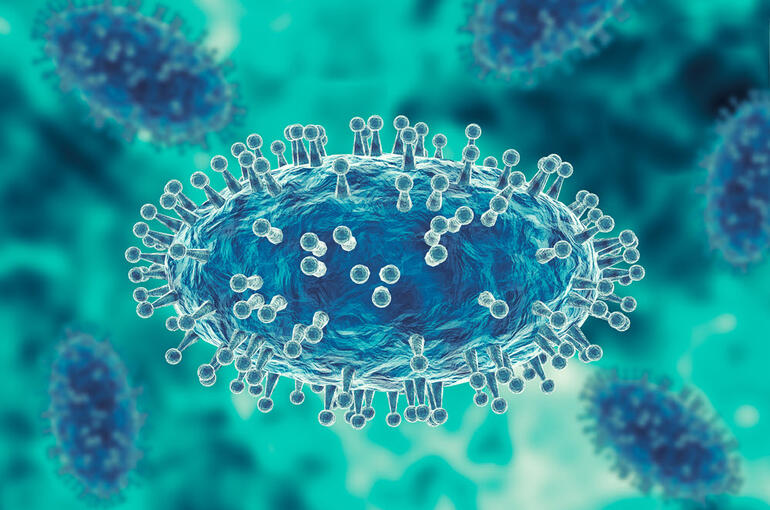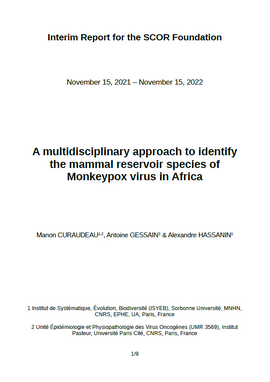A One Health Study of Monkeypox: 2022 Research Report
This study is led by Professor Arnaud Fontanet, Director of the Emerging Diseases Epidemiology unit at the Institut Pasteur, who also heads the AFRIPOX project on the same topic.

This study is led by Professor Arnaud Fontanet, Director of the Emerging Diseases Epidemiology unit at the Institut Pasteur, who also heads the AFRIPOX project on the same topic. The project is expected to run for four years, 2020-2024.
Monkeypox has become a hot topic since the infection started to gain ground in 2022 and now has been reported in countries far beyond its historic range on the African continent. There is also growing evidence to support a possible link between the spread of the virus, population growth and deforestation in the areas of origin of the virus.
Previous epidemics have suggested that Monkeypox virus (MPXV) can be transmitted through contact with animals of African rainforests. Although MPXV has been identified in many mammal species, most are likely secondary hosts, and the reservoir host has yet to be discovered.
In this report, the researchers provided a complete list of African mammal genera (and species) in which MPXV was previously detected and predicted the geographic distributions of all species of these genera based on museum specimens and an ecological niche modelling (ENM) method. Then, they reconstructed the ecological niche of MPXV using georeferenced data on animal MPXV sequences and human index cases and conducted overlap analyses with the ecological niches inferred for 99 mammal species in order to identify the most probable animal reservoir.
The results indicate that the MPXV niche covers three African rainforests, including the Congo Basin and the Upper and Lower Guinean forests. The most probable MPXV reservoir is Funisciurus anerythrus, an arboreal squirrel, based on the two niche overlap metrics, the areas of higher probabilities of occurrence, and available data on MPXV detection.
To better understand the evolutionary history of Funisciurus anerythrus, the researchers sequenced full genomic data for a selection of sixteen selected squirrels of the tribe Protoxerini. Both mitochondrial and nuclear phylogenies support a strong phylogeographic structure within Funisciurus anerythrus, with a basal dichotomy separating populations from West Africa from those of Central Africa. Four geographic lineages corresponding to the Upper Guinean forests, the Dahomey Gap, the Lower Guinean forests and the Congo Basin. Since this pattern is very similar to the phylogeography of MPXV, these results provide additional support for a key role of Funisciurus anerythrus as reservoir host of the MPXV.
Article by Antoine Gessain, M.D. Emmanuel Nakoune, Ph.D. and Yazdan Yazdanpanah, M.D. Monkeypox | NEJM
------------------------------------
For more information, please see:
A One Health Study of Monkeypox: Human Infection, Animal Reservoir, Disease Ecology, and Diagnostic Tools | SCOR Foundation
